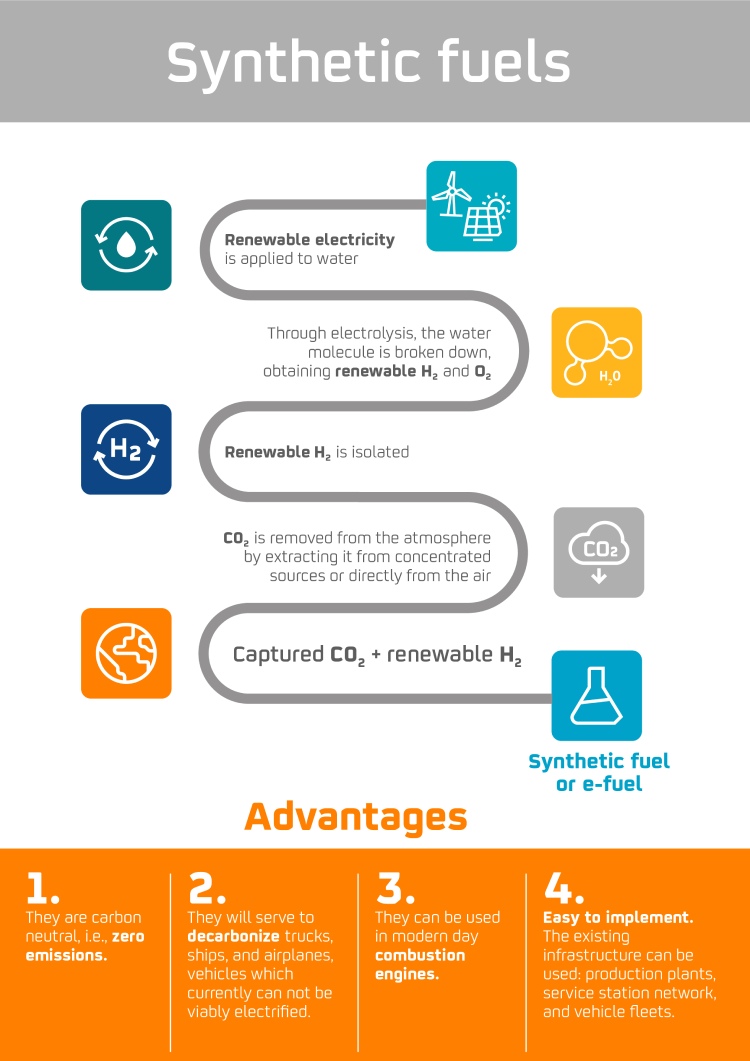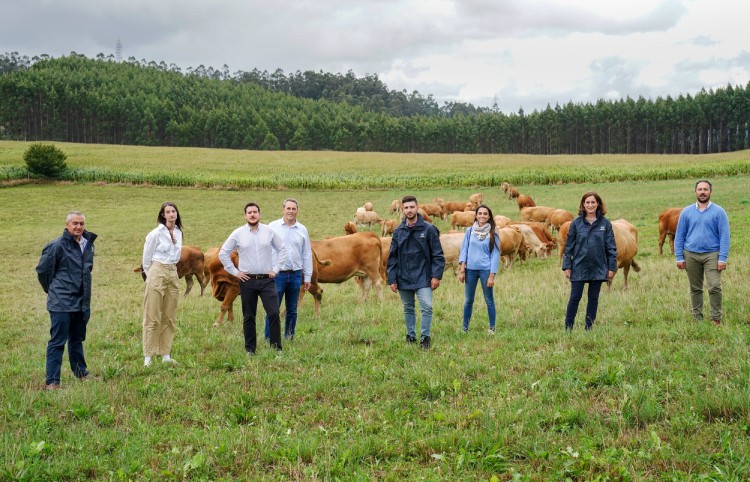Synthetic fuels
How do we produce synthetic fuels?
We use renewable hydrogen and CO2 to produce synthetic fuels. The hydrogen is obtained from the water molecule by using electrolysis with renewable energy, and the CO2 is captured at the Petronor refinery.
The main innovation of the project is to manage to create syngas (CO+H2) from H2 and CO2, generating water as a by-product. Next, we use the latest advances in existing technologies to create gasolines or kerosenes from syngas.
Synthetic fuels are, from the chemical point of view, identical to those currently used in combustion engines, and can therefore use the existing infrastructure and logistics network. These fuels have different final applications, such as aviation fuel, renewable diesel, and naphthas.

Synthetic fuels in figures:
Synthetic fuels in figures:
8,000
liters/day of
low-carbon footprint fuels.
6.7
Mt of CO2
captured/year.
Circular benefits
- We remove CO2 from the atmosphere, transforming a pollutant into a raw material.
- We displace the use of fossil raw materials.
- We manufacture products with a low- or zero-carbon footprint as we forge ahead with our commitment to become net zero by 2050.
- We use renewable energy in our processes.
- We offer a decarbonization alternative to sectors that can't be currently electrified such as long-distance, maritime, and air transportation.
- We promote the adoption of new technologies and production models.

Classification by key lines and value chain
Classification by key lines and value chain
Our circular economy projects are aligned with the key lines of our strategy and are present throughout our entire value chain, from obtaining raw materials to commercializing products and services.

Find out more about our circular economy projects
Find out more about our circular economy projects
Find out more
Find out more




















